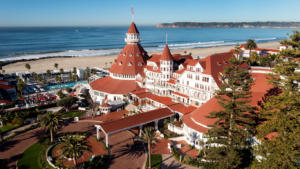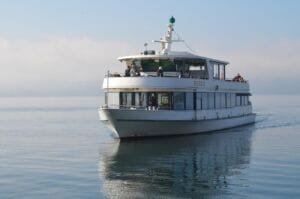Nepal is a beautiful place for trekkers and travelers. It has amazing landscapes, rich culture, and lots of adventures. To make the most of your trip, it’s important to know the best time to visit. Whether you want to trek in the Himalayas or explore the Kathmandu Valley, choosing the right season can make a big difference. Each season in Nepal has something special to offer, from colorful spring flowers to clear autumn skies. This guide will help you find the best time to visit Nepal, plan your trekking trips, and understand the weather so you can have the best experience.
LEARN MORE: Read the latest Arizona news here
Nepal’s climate is different in every region because of its varied landscapes. Knowing the right time to visit can help you have a great adventure. Whether you are planning popular treks like the Manaslu Circuit, or exploring cultural sites like the Kathmandu Valley Tour, understanding the seasons will help you choose when to visit. Also, be sure to check out the travel essentials you need for your next vacation so you are ready for your journey.
Nepal has so much to offer, from its high mountains to its rich culture. Travelers love Nepal’s many regions, from the snowy mountains in the north to the green jungles in the south. Planning your visit based on the seasons can make your trip much more enjoyable.
Understanding Nepal’s Climate and Seasons
Nepal’s geography means that it has different climates, and each season offers a unique experience. The country has four main seasons: spring, summer (monsoon), autumn, and winter. Each season is special in its own way. Spring is known for its beautiful rhododendron flowers, while autumn is the perfect time for trekking because of clear skies and mild weather. Winter is great for low-altitude treks and cultural tours, and the monsoon season makes the landscapes lush and green, creating a quieter experience for travelers.
Nepal’s landscapes are very diverse, from the high peaks of the Himalayas to the green lowlands. This means that each season brings different conditions. In higher areas, temperatures can be much colder compared to the lower valleys, which stay warmer. Knowing these seasonal differences will help you pack right, plan your activities, and enjoy your time in this beautiful country.
Nepal also has a big range of elevations, from tropical lowlands to some of the highest mountains in the world. This means that one region may be having heavy rains while another has clear skies. Understanding these differences helps you prepare better and have a more enjoyable trip.
Best Seasons to Visit Nepal
Spring (March to May)
Spring is one of the best times to visit Nepal, especially if you want to trek. The weather is mild, and the hills are covered in colorful rhododendron flowers. Popular treks during this season include Annapurna Base Camp and Langtang Valley, both offering great views and comfortable temperatures. The mild weather makes it a good time for outdoor activities, cultural tours, and wildlife watching.
Spring is also a good time for many other activities. As the snow melts in the higher regions, rivers start to flow more, which makes spring perfect for white-water rafting. There are also lots of festivals during this time, like Holi, where people celebrate with bright colors. Spring is great for both adventure and cultural experiences, making it a very special time to visit.
If you love wildlife, spring is also a great time to see Nepal’s animals. In places like Chitwan National Park, animals are more active, and the warmer weather makes it easier to spot them. If you like birdwatching, spring is also the best time to see migratory birds. During spring, all parts of Nepal come alive, from busy cities to peaceful mountain trails.
Summer / Monsoon (June to August)
The summer months are also the monsoon season in Nepal, with lots of rain that makes the landscapes lush and green. Traveling during the monsoon has both good and bad points. The rain can make trekking trails slippery, but it also means fewer tourists and beautiful views of green fields and waterfalls. Areas like Upper Mustang are not affected much by the monsoon, making them good options for trekking. The monsoon is a great time for those who want a quiet and peaceful experience.
During the monsoon, the countryside looks very vibrant, with rice paddies and full waterfalls. While some trekking trails like Everest Base Camp can be tricky because of the rain, places like Upper Mustang and Dolpo are dry and good for trekking. The green scenery and misty mountains are also perfect for photographers. However, be prepared for leeches on the trails and some possible flight delays due to bad weather.
Even with these challenges, the monsoon season shows a unique side of Nepal. Many cultural festivals, like Janai Purnima and Ropain, happen during these months. These festivals are important to the local people, and joining in will give you a real cultural experience. The rain also makes the natural scenery even more beautiful, with bigger waterfalls and green valleys.
Autumn (September to November)
Autumn is the best season for trekking in Nepal because of its clear skies and stable weather. It is also the most popular time for treks like Everest Base Camp, Annapurna Circuit, and Manaslu Circuit, which all offer amazing views of the Himalayas. The cool temperatures and dry weather make it perfect for trekking. Autumn is also a good time to enjoy Nepal’s cultural festivals, like Dashain and Tihar, which make your trip even more special.
The clear weather makes autumn the busiest time for trekking in Nepal. During these months, the trails are filled with people from all over the world who want to see the stunning views of the snow-capped mountains. The cities like Kathmandu and Pokhara are full of life, with both tourists and locals celebrating the big festivals. Dashain, the biggest Hindu festival in Nepal, fills the streets with music, food, and joy. If you want both cultural experiences and outdoor adventures, autumn is the best time to visit.
The festivals in autumn are beautiful and have deep cultural meaning. Tihar, which is also called the festival of lights, is a time of joy, with houses lit up and people honoring animals like crows, dogs, and cows. The festive mood, along with the natural beauty, makes autumn a magical time to visit Nepal.
Winter (December to February)
Winter in Nepal is cold, especially in the higher mountains. However, it is still a good time for lower-altitude treks and cultural visits. Popular winter treks include Ghorepani Poon Hill and Chisapani. These routes offer beautiful views without the extreme cold of the higher mountains. Winter is also a great time to visit cultural sites in Kathmandu Valley, Pokhara, and other warmer places. If you want a quiet trekking experience and want to enjoy Nepal’s culture, winter is a good time to visit.
Winter in Nepal means fewer tourists, which is perfect if you want a peaceful experience. While higher-altitude treks like Everest Base Camp may not be ideal because of the cold, lower-altitude treks still have stunning views and clear skies. The cities are less crowded, making it a great time to visit temples, take cultural tours, and explore historic areas like Bhaktapur. Winter gives you the chance to see Nepal at a slower pace, with snow-covered peaks and charming old towns.
Winter is also a good time to see Nepal’s culture without the crowds. Plus, winter mornings are often clear, giving you beautiful views of the mountains, especially at sunrise.
Special Considerations: Choosing the Right Time Based on Activities
The best time to visit Nepal depends on what you want to do. For trekking, spring (March to May) and autumn (September to November) are the best times. The weather is stable, and the skies are clear. These seasons are great for treks like Everest Base Camp, Annapurna Circuit, and Manaslu Circuit. Cultural tours are best in winter (December to February) when it is cooler and less crowded. Festivals like Dashain and Tihar happen in autumn, which gives you a special cultural experience. Adventure sports like rafting and paragliding are best in spring and autumn when the weather is mild and clear. The monsoon season (June to August) is great if you want a quieter trip, with lush green landscapes and treks in places like Upper Mustang.
If you love birdwatching, winter and spring are the best times to visit. Places like Chitwan National Park and Koshi Tappu Wildlife Reserve attract many migratory birds, making them great spots for bird lovers. If you are interested in mountain climbing, spring is the best time to try to climb peaks like Everest, as the weather is best. Yoga and meditation retreats are available all year, but winter is quieter, which makes it easier to relax.
If you are planning a family trip, spring and autumn are the best times, as the weather is more comfortable. Visiting during festivals will give you a chance to see Nepal’s rich culture. Make sure to plan your trip early, as flights and hotels fill up fast during peak seasons. Also, be ready for temperature changes, as mornings and evenings can be chilly, even in warmer seasons.
For more tips on what to pack and bring on your journey, check out the travel essentials you need for your next vacation.




